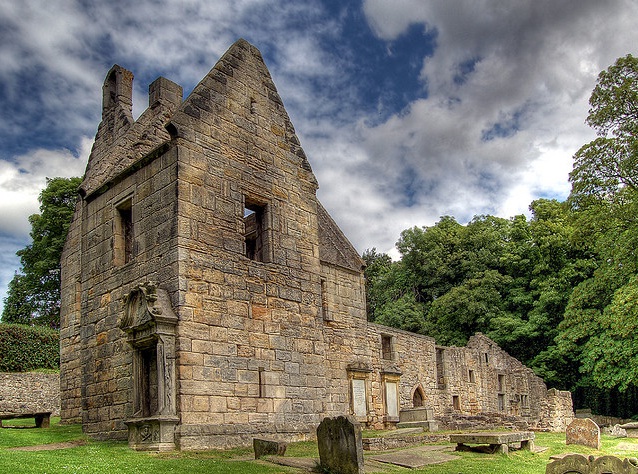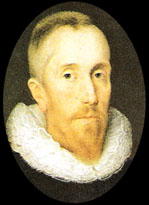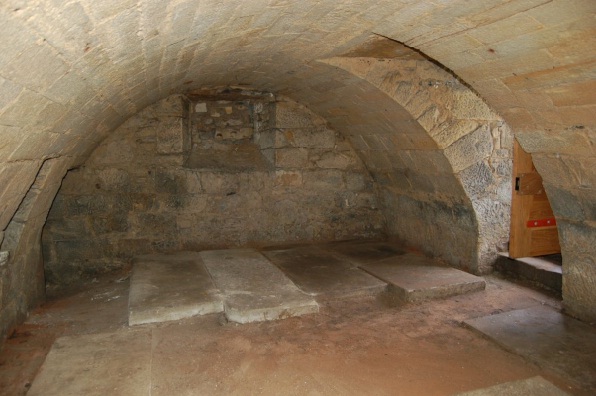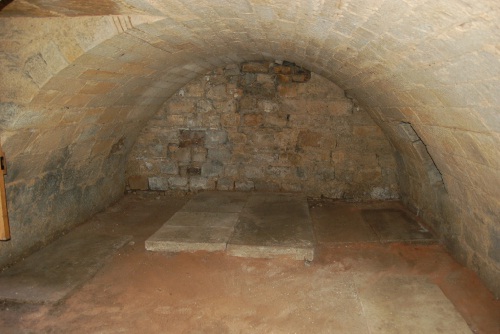|
 “The memory of great men is no less useful
than their presence.”
George, 4th Earl of Winton. “The memory of great men is no less useful
than their presence.”
George, 4th Earl of Winton.
At St. Bridget's Church, Dalgety, Fife, the tombs of the Earls of Dunfermline
Alexander Seton, Chancellor of
Scotland and 1st Earl of Dunfermline:
In 1821, while repairs
were being made in Dalgety Church, Fifeshire, a closed vault
was discovered, in which were six coffins; one of these,
from the inscription on it, contained the remains of the
Earl - viz., "Alexander Setonius, Fermelinoduni Comes,
Scotiae Cancellarius," &c. (See Annals, date 1622.)
 Lord Chancellor
Dunfermline was frequently accused of a leaning to Romanism, and Tytler terms
him a Roman Catholic, in which religion he remained loyal until his death. Lord Chancellor
Dunfermline was frequently accused of a leaning to Romanism, and Tytler terms
him a Roman Catholic, in which religion he remained loyal until his death.
After a spectacular funeral procession, long noted in Scottish history and the
poem, 'Tears for the Death of the Earl of Dunfermline, Chancellor of Scotland',
he was buried in a vault under the old church of Dalgety,
in Fife, after a sermon by Archbishop Spottiswood.
"A Note or Memoriall of ye Buriall of that Noble
Honourable and never to be forgotten worthe man
Alexander Earle of Dunfermline Lord Fyvie and Urquhart
Great Chanceller of Scotland who took sickness the first of
June 1622 and dyed on Sunday the sixtine of ye said month
being Sunday (sic) at seiven hours in the morning at Pinkine
and the same day he was imbalmed and clos’d up in a chist of
oak and remained there till Wednesday the 19” of the said
moneth,
The whilk day he was convoyed be his servants (before)
frae Muselbrough of Pinky first by coatch and then by boate
thence to Dagity in ffyfe and was on ye sea from five hours
efternoon till 8 at Night when he was caried from ye sea
syde furthof ye bark be his friends and servants to his
House of Degity and was putt in a chamber and watched thre
till Tuesday the 9 of Jully 1622: The qlk day he was
honourable buried and convoyed from the House of Degity to
the Kirk yr at ye sea side in forme and manner
eftermentioned."
  The
Chancellor Seton was succeeded by Charles his only surviving
son, by his third wife Margaret Hay, Later the Countess of
Dunfermline, daughter of Lord Hay. Charles, 2nd Earl of
Dunfermline was born 1608, succeeded his father in 1622. He
was a courtier and Privy Counsellor, and Gentleman of the
Bedchamber under Charles I. He also was commander of a
Scottish regiment. The
Chancellor Seton was succeeded by Charles his only surviving
son, by his third wife Margaret Hay, Later the Countess of
Dunfermline, daughter of Lord Hay. Charles, 2nd Earl of
Dunfermline was born 1608, succeeded his father in 1622. He
was a courtier and Privy Counsellor, and Gentleman of the
Bedchamber under Charles I. He also was commander of a
Scottish regiment.
Charles, the
second Earl of Dunfermline, was a staunch supporter of the
Royalist cause, and who settled in Holland for the period
after the execution of Charles I in 1649.
At the
Restoration in 1660 he became a member of the Privy Council,
in 1669 a Lord of Session, and later Lord Privy Seal. He
died in 1672 and was buried at Dalgety House (St. Bridget's
Church). He was
briefly followed by his second son Alexander as Earl of
Dunfermline.
Alexander, 3rd Earl of
Dunfermline died unmarried in Edinburgh in 1675 and also was
buried at Dalgety, and the title passed to his brother,
James, 4th Earl of Dunfermline, later forfeit and died and
buried in France.
| 
